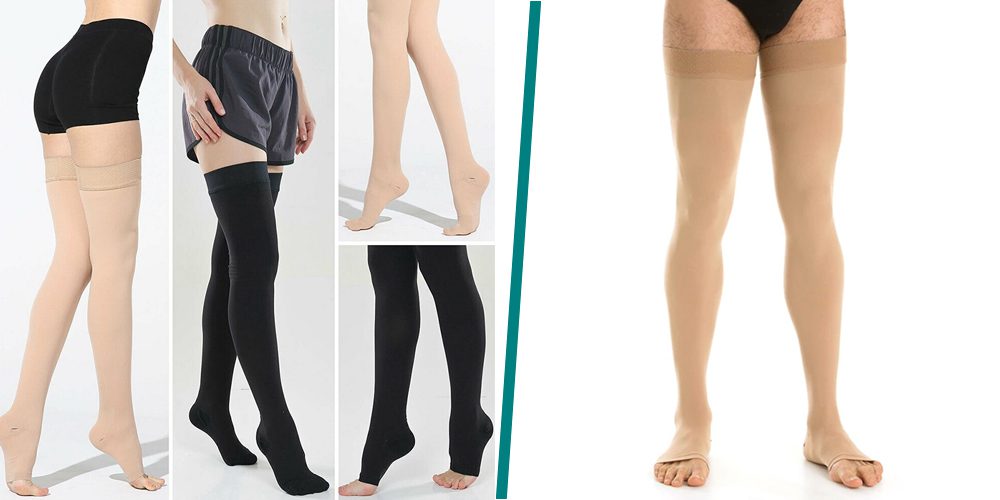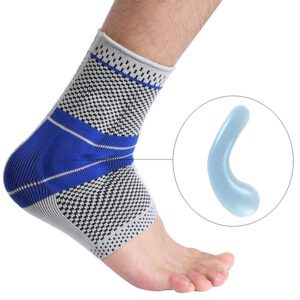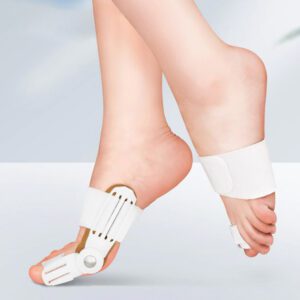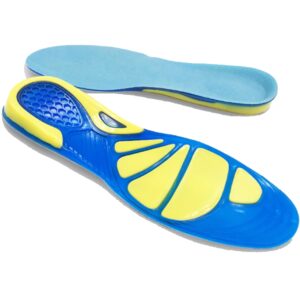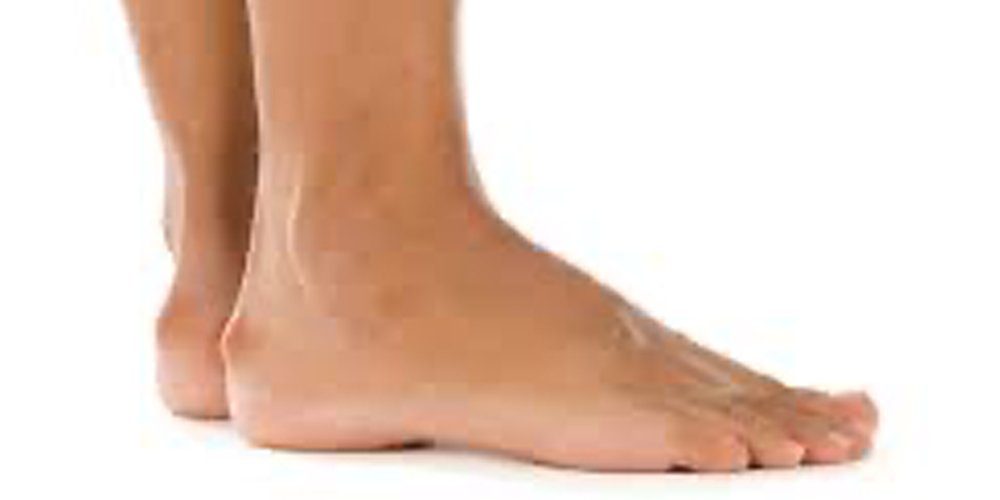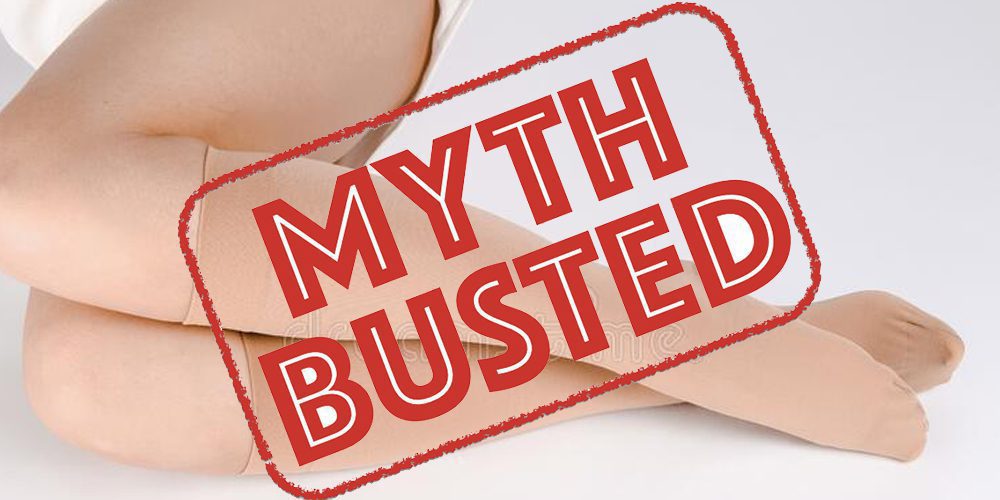Tights and stockings have been staples of women’s fashion since the 16th century. Today, many people choose to wear them as a form of medical support for their legs and feet. Compression garments are typically used by those who suffer from circulatory problems such as varicose veins, venous insufficiency (a condition where blood doesn’t flow back through the veins easily), or deep vein thrombosis (blood clots in the leg). They may also be prescribed by health care providers for the treatment of chronic conditions like lymphedema or lymphoedema which can cause swelling in the limbs. Compression garments are generally recommended when there is an increased risk of developing these conditions due to factors including genetics, age, lifestyle, and a history of previous diseases.
Compression stockings are made from a combination of nylon, polyester, lycra, spandex or a similar material. The tightness of the compression will depend on its level which is measured in millimeters of mercury (mmHg). Generally speaking, doctors recommend compression levels at about 30 mmHg (mmHg). Some people may need more or less compression depending on the severity of an illness.
There is some debate among health care professionals as to what level of compression, if any, a person should use if they don’t have a diagnosed circulatory problem. Persons who choose to wear support stockings for reasons other than a medical condition should seek the advice of a medical professional, such as a family doctor or pharmacist.
Compression stockings can be worn for extended periods of time and many styles come in a seamless form which means there are no irritating bands at the top where they roll down. Many brands also offer short options for people who do not need full thigh coverage.
There is also some controversy and debate about whether or not compression stockings can be worn by women who are pregnant. Many physicians recommend against wearing them after the first trimester, but still, support the use of them in general to prevent circulatory problems. In some cases, a doctor may suggest alternatives for support such as a support hose with graduated compression, pneumatic stockings, or compression socks.
There are many factors that contribute to the effectiveness of thigh-high compression stocking. For example: if a person has knee problems and chooses an incorrect size, the support provided by wearing them will be less than optimal and therefore it won’t work as effectively. If they’re not worn for long enough periods of time, they will not do their job.
While the effectiveness of thigh-high compression stocking is still somewhat up for debate among some professionals, there are many who believe that these garments can provide relief to those with certain circulatory problems and assist in reducing the symptoms associated with them. The key is that they must be worn correctly and as part of a treatment plan prescribed by a doctor.
Do thigh-high compression stockings work?
The answer is a resounding, yes. If you have been diagnosed with a medical condition that requires the use of compression garments, then thigh-highs are definitely something to consider. Compression hosiery helps engorge veins by applying pressure to them, which pushes blood up into the larger veins of the body. In turn, this reduces discomfort and swelling caused by lymphatic fluid collecting in the lower legs after a long day’s work or an active day playing with your kids at the park. The compression stockings are used for all different ranges of severity from mild to advanced cases that require surgical intervention.
There is no doubt about it; the use of compression stockings for circulation management is one of the best things to come along in medical treatment. And thigh-high compression hoses are famous for their ability to provide that gentle, but effective pressure on veins and improve blood flow.
How many hours a day should you wear compression stockings?
It depends on the condition. Most doctors will prescribe a number of hours that they should be worn each day. It can range from 10 to 20 hours. However, you may need to invest in more than one pair to accommodate your lifestyle if you find them very comfortable and easy to wear for long periods of time.
In most cases, wearing compression hosiery is prescribed by the doctor to treat moderate to extreme conditions. If you are not at that point yet, it can help prevent these issues from occurring. Wearing them for too long or too short of a time period will provide minimal results and may even do more harm than good.
If you only experience mild conditions or pain or if you simply want to relieve your tired and achy feet or legs after a long and stressful day, you can wear thigh-high compression socks without any problems just for the time that you want or need.
For the best results and to combat swelling, we recommend putting your thigh-high compression stockings on directly after waking up. Your feet and legs tend to swell over the course of a day and that way you ensure the least swelling and best blood flow throughout the whole day.
How high should thigh-high compression stockings go?
The purpose of these garments is to improve blood flow and the best way to do that is to make sure they fit properly. If they are too tight or too loose, their effectiveness will be compromised and you probably won’t get the desired results.
If your compression stockings don’t reach all the way up and stop around mid-thigh, you don’t need to worry. It is not necessary for them to cover your whole leg or be knee-length. You can get the same benefits of wearing this hosiery around the middle part of the thigh.
Wearing compression hosiery on your legs isn’t safe if they’re too loose, but it’s also not good if they’re too tight. If you find that the leg is uncomfortable when it’s on, then there is a very good chance that it is too tight. Conversely, if the thigh-highs feel loose while you have them on and they tend to roll down your legs or bunch at your ankles, then they’re definitely too big.
Thigh-high compression socks should go all the way up to the top of your thighs. In order to choose the right size, measure the length of your legs from the top of your thighs to the bottom of your heels and compare the results to the size chart of the socks you have chosen.
Do I need thigh-high compression socks?
Compression socks come in a variety of styles, including knee-high and thigh-high compression socks. Though the prospect of wearing compression socks up to the thigh may be unpleasant for some, they provide numerous advantages that may help you live a better life.
Thigh-High Compression Stockings cover the entire leg. As a result, they allow the whole leg to benefit from compression therapy. If you’re using compression socks that stop at the calf or knee, it’s self-evident that your upper legs aren’t receiving any benefits from the compression treatment.
Thigh-high compression socks will boost the speed and quantity of your blood, which will aid in the reduction of blood pressure. Blood will be unable to reflux down to your feet or into superficial veins as a result of this decrease in vein diameter, thus preventing heart strain. These socks will also assist your veins to pump more blood to your heart.
Varicose veins are fairly prevalent in most people. When one’s valves in the veins malfunction, blood may pool or flow in the wrong direction, resulting in varicose veins. Because of your legs’ appearance, you may feel self-conscious about your legs. Pressure applied to your legs will help the blood to flow properly in the direction of your veins by preventing these varicose veins from getting worse. They’ll do this by applying pressure to your legs, allowing blood to flow more freely in the intended direction.
Compression socks are designed to reduce swelling. Knee-high compression stockings, on the other hand, are unlikely to help with any swelling above the knee since they do not cover the knees or the areas above them. Thigh-high compression stockings are likely to be effective in treating any swelling that may occur above the knees.
The comfort level of Thigh-High Compression Stockings Is higher than that of waist-high compression stockings. As a result, you can wear thigh-high compression stockings all day long. You also don’t have to remove these stockings when you go to the restroom. We here at BaronActive only sell high-quality compression socks, which are all guaranteed for at least 6 months. All of our compression socks and legwear are made of superior quality, 4-way stretch fabric. and designed to provide the perfect amount of compression with the most possible level of comfort for you.
Are thigh-high or knee-high compression socks better?
A study compared the effect of thigh-high compression socks to knee-length compression socks for deep vein thrombosis.
When it comes to deep vein thrombosis, thigh-length stockings offer a risk reduction when compared with knee-length stockings (odds ratio 1.197, confidence interval 0.983-1.458). However, this finding is of little importance. When it comes to prophylaxis of deep vein thrombosis, current data does not suggest that thigh- or knee-length compression stockings are more effective than shorter ones.
At the end of the day, both types of compression socks work. And both types do a great job. It only comes down to your personal preference and how high up the leg you want the compression to go.
How do you wear thigh-high compression socks?
To put on these socks, roll them down to your heels and then slip your feet into them. After that, pull the socks up and unroll them over your legs. If any wrinkles form in the socks after they’re unrolled, adjust them.
If your skin is too dry, use lotion, cornstarch, or baby powder to make wearing these socks more pleasant. To help you wear these socks, consider investing in a donning device.
How do you keep thigh-high compression socks up?
Compression stockings that don’t stay up can be caused by a number of things. Follow this troubleshooting guide to see if any of it applies to you.
- Washing. They must be washed after each usage to cleanse the fabric of dirt, sweat, dead skin, and bodily oils. When you put on dirty compression stockings for a long period of time without washing them, the elastic threads get weak from overuse. So wash them and they’ll be as good as new.
- Care for the silicone band. Every 1-2 weeks, the silicone band on compressive thigh highs requires special attention. Use rubbing alcohol and a cotton ball to clean the silicone beads if any residue has built up since washing doesn’t remove it.
- Did your weight or amount of swelling change? Compression stockings don’t stretch as much as your body does, so check them occasionally to be sure they’re still the correct size for you. When individuals wear compression stockings for the first time, their legs are swollen. Their legs will naturally shrink after they’ve worn them for a while, and it’s likely that they’ll fit into another size.
- Your body’s anatomy. Thigh high compression stockings are frequently difficult to keep up for people with thin thighs. A knee-high may also have a difficult time staying put, especially for persons who have softer skin around their knees. People find it annoying and sometimes unpleasant when the compression stockings roll down in both of these situations.
- Apply skin adhesive. There are various skin adhesive products that you can use to keep your thigh high compression stockings up. These products are easy to apply and you can simply wash them off with warm water.
Are there any side effects to wearing compression socks?
Compression socks are generally safe to use when worn correctly. That doesn’t imply that they’re risk-free for everyone under all circumstances. Compression socks should not be used by those with delicate or sensitive skin, among other things. It’s also critical that compression socks are fitted properly.
Here are some possible hazards to consider:
- Itching and skin irritation. Compression socks can irritate skin and cause itching. Redness and temporary depressions in the skin on your legs at the sock’s border might develop when compression socks are not correctly put.
- Can scrape and bruise legs. Your skin is more prone to chafe or scrape if it is dry or you are visiting places with low humidity (such as an airplane). Compression socks can cause cuts, scrapes, and bruises in individuals who have a damaged skin barrier. When compression socks or stockings are fitted correctly, this is virtually nil.
- Cut off circulation. Compression socks and stockings are designed to give constant pressure to the legs in order to assist with circulation. However, if they aren’t worn correctly, they can work against you by restricting blood flow through your legs.
- Increased sweat under the socks. Some people develop an excessive quantity of sweat under their compression socks that may lead to fungal infections (such as athlete’s foot), rashes, and chafing.
- Skin diseases. There are some cases in which compression socks can aggravate certain skin diseases, including ulcers and dermatitis. People who have poor blood circulation or diabetes may be especially careful about wearing compression stockings because their condition can lead to further problems when the legs are impacted by reduced blood flow.
Which is better compression socks or stockings?
Compression socks and stockings are available in a range of compression levels, with mmHg as the unit of measurement. There is no difference between the pressure applied by socks and stockings. In other words, a 15-20 mmHg compression sock provides the same degree of pressure as a 15-20 mmHg compression stocking. The design and material of socks vs stockings are the primary differences.
Compression stockings are available in a variety of lengths, including knee-length, thigh high, and hosiery styles. Stockings with an open toe are also available. Compression socks, on the other hand, are generally ankle length or knee-high and have a closed toe.
Open-toe or closed-toe compression stockings?
Compression stockings come in a variety of forms and colors. Is it necessary to wear an open toe or a closed toe compression stocking? An open toe compression sock or stocking has a gap at the toes. This is perfect for folks with big shoe sizes or who have sensitivity issues in their toes or front of the feet.
Open toe compression stockings are also more comfortable to wear in the heat. People commonly put on conventional socks over an open toe compression stocking. The comfort of wearing open toe compression stockings is aided by their flexibility. Their flexibility makes open toe compression stockings popular during the spring and summer, as well as regions with warm temperatures.
Closed toe compression stockings resemble a normal sock or stocking. Compression stockings with a closed toe design are commonly equipped with a bubble toe to allow for greater toe mobility. Closed toe compression stockings can fit shoe sizes up to 13 in men and 12 in women depending on the size and model.
So, why would you choose one over the other? Is there a difference in effectiveness between open and closed toe compression stockings?
The truth is that it’s simply a matter of personal preference whether you pick open toe or closed toe (or vice versa). Because the gradient compression starts at the ankle, you won’t lose any of the sock’s compression effect by tweaking the foot.
Is it okay to sleep with compression socks on?
Yes, that’s totally fine. Compression socks can be worn 24 hours a day if you like. You may wear compression socks any time of the day or night as long as they are not worn for 24 hours straight. You should wash your legs at least once a day, especially if you have vein insufficiency-related skin issues, and it’s always a good idea to swap your socks on a daily basis as part of good personal hygiene. Wear one pair of compression socks during the day and a different pair of compression socks while you sleep if at all possible.
What happens if compression socks are too tight?
One of the most common criticisms about compression socks is that they are too tight. Compression socks are often unpleasant to wear. People who use compression socks frequently discover them to be uncomfortable. Because they find them unbearable, they finally stop using them. And that is not what you want.
Compression socks don’t work unless you put them on. That’s why everyone who uses compression garments should understand when compression socks are too tight, when they require a different compression level, and when there are other reasons for discomfort that need to be addressed.
If your compression socks are too tight you may experience some issues, including:
- Marks on your skin. If the compression socks are too tight they can leave marks on your skin that need anywhere from a few minutes to an hour to go away. If your legs are really swollen, you may still notice the marks after a few hours though.
- Pain in the legs or feet. Sometimes, a new compression sock is uncomfortable because it has been put on too tightly. After you have worn your compression socks for a little while, they should become more comfortable. This is not always the case though and the socks could leave the legs feeling tender or even cause pain in the feet after a few hours of wear.
- Changes of skin color. Thigh-highs or compression stockings might cause blanching of the skin. When you take off your compression attire, your skin may appear abnormally pale, and it will gradually return to its normal color in an hour or so.
- Allergic reactions. Some people have allergies to latex, so it’s best to invest in latex-free compression socks. Also, the presence of rubber bands in compression hosiery may trigger adverse skin reactions.
- Unable to get your compression socks on. There’s a certain knack to putting on compression socks. Some people wrap their socks around their feet and then pull them up little by little. The difficulty with this technique is that it gathers all of the compression around your toes. It makes it more difficult to pull your socks up in this case. It’s possible to reach inside the heel pocket and grab your stocking at the top. With the heel pocket still in place, turn the stocking down toward the toe. Then open up the stocking and ease your foot in.
What can I use besides compression stockings?
If for some reason, you cannot wear compression socks, there are a few alternatives that you can and should try.
Getting compression socks on and comfortably in place may be difficult if you have sensitive skin, weak hands, or severe edema. Fortunately, more and more firms are releasing alternatives to traditional compression socks – compression wraps. These items wrap around the leg easily and use velcro closures to attach.
Another cool alternative is using a compression sleeve. A compression sleeve is a garment that fits over the calf and foot like a long sock. A firm, adjustable ring or band of elastic fabric rests against the skin just below the knee or above the ankle to apply pressure around the leg from knee to foot. The purpose of using a compression sleeve is to compress leg muscles and control any swelling in your feet and ankles. They’re easy to put on and take off, just like socks. No lengthy preparations are necessary.
You can also try gel pads or air casts . These don’t compress the leg the same way that compression stockings do, but they can be worn under normal socks, so you wear them every day.
Takeaways
In the end, you have to take your time and choose a compression sock that’s right for you. If it’s properly fitted, feels comfortable on your skin, and doesn’t pinch or pull – go ahead and wear it.
Don’t be discouraged if it takes a little trial and error before you find a pair of socks that work for you.
If you have circulation problems due to having had a stroke, varicose veins, diabetes or any other illness, your doctor may prescribe compression stockings.
Once wearing the stockings and achieving comfort and relief of symptoms, many people cannot imagine how they ever got along without them.
Comfortable thigh high compression socks can be a life saver for people with existing circulatory problems, but should only be worn after discussion with your physician. Thigh-high compression stockings or socks should not cause blanching of the skin, nor should they trigger allergic reactions.
Want to share your story, recommendations or favorite brand of compression socks? Comment below and let us know about it!





